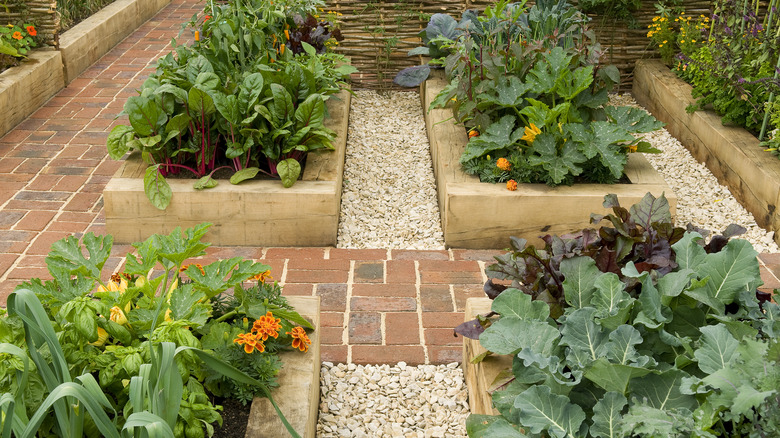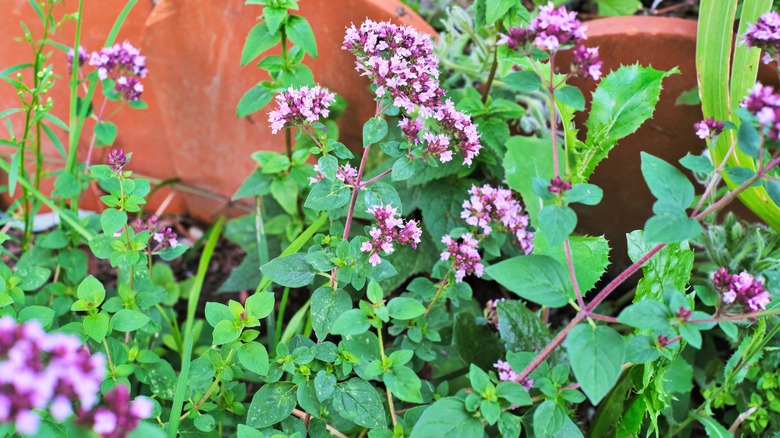This Savory Herb Makes A Great Companion Plant For Your Vegetables
Vegetable gardening is sometimes fraught with challenges, from difficult weather conditions to marauding insects. There are various plants whose aromatic qualities repel insects, and planting these in your vegetable garden is a great way to protect your veggie yield. One helpful practice for deterring harmful insects is companion planting. Companion planting means planting certain plants near each other for mutually beneficial results. One of the best companion plants in the garden is oregano.
Oregano, commonly used for cooking, and also for medicinal applications, is a perennial herb that grows in robust clumps in the garden. It also grows in containers, needing only a sandy but rich soil and partial to full sun to thrive. Oregano is a savory herb that originates in the Mediterranean and is a staple in a number of world cuisines. Oregano's savory flavor comes from two aromatic compounds: carvacrol and thymol (also found in thyme).
The aromatic compounds in oregano have anti-fungal and anti-bacterial properties. They also give this plant its characteristic herbal fragrance, which is an effective insect deterrent in the garden or when planted around a patio area. Greek oregano in particular is thought to be the most effective variety in this regard, but any variety of oregano will provide this benefit. Rubbing the leaves gently between your hands will release the scent and help keep mosquitoes away.
Oregano repels insects that eat veggies
Oregano's insect-repellent qualities work to deter a wide variety of insects including mosquitoes, bed bugs, ticks, and houseflies. This plant repels specific insects that feed on vegetable crops like cabbages, broccoli, asparagus, carrots, cauliflower, lettuces, and zucchini. The vegetable-eating insects repelled by oregano include carrot flies, whiteflies, ants, cucumber beetles, cabbage moths, and asparagus beetles. At the same time, some benefits of growing oregano are that it attracts helpful insects like bees and lacewings.
Since oregano grows as a perennial, you can rotate your different vegetable crops year to year so they can benefit from these insect-repelling and pollinator-attracting qualities. You can also grow oregano in containers and place them in different parts of the garden, which gives you more flexibility and the ability to target specific crops. Oregano begins to emerge fairly early in the spring and produces plenty of leaves by late spring as vegetable seedlings are emerging. It's a great companion plant for other herbs, too, like sage, and it's easy to cultivate so long as you don't make any rookie growing mistakes.
Oregano clumps will grow larger each year and can be divided and planted in more spots as needed (or shared with other gardeners). It's best to divide them in the fall when they've gone dormant. Whether planted in rows as a perennial or in containers, oregano as a compnaion plant in the garden adds its pleasant herbal scent while effectively deterring insects that want to eat your veggies.

